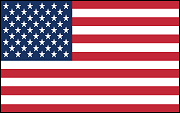Electoral College v. The People

Who elects the president?
by David Johnson
 Related Links |
The presidential election cycle seems to generate renewed interest in the Electoral College. Some experts have suggested that the presidential candidate who actually receives the most votes might not be elected by the Electoral College. This is because 48 states award all their electoral votes to the winner, regardless of how large their margin of victory was. Only two states—Nebraska and Maine—allocate electoral votes proportionately.
This raises the possibility that a candidate could narrowly win a number of big states and get the most electoral votes and yet lose the popular vote.
How the Electoral College Works
Five Times in History
Five times in election history a candidate has won the popular vote but lost the election.
In 1824, Andrew Jackson won both the popular and the electoral vote—that is he received more votes than any of the other candidates. But, no one in the four-man race won a majority, or more than 50%, in the Electoral College, so the House of Representatives decided the outcome. The House picked John Quincy Adams, who had come in second in the popular and electoral votes. In 1876, Samuel J. Tilden won 51% of the popular vote, while Rutherford B. Hayes captured 48%. However, Hayes won 185 electoral votes, while Tilden got 184. A special electoral commission picked Hayes to be president.
In 1888, Benjamin Harrison became president by winning 233 electoral votes, even though he received only 47.8% of the popular vote. His opponent, Grover Cleveland, garnered 48.6% of the popular vote, yet received only 168 electoral votes.
In 2000, Al Gore won 48.38% of the popular vote and 266 electoral votes. George W. Bush won only 47.87% of the popular vote but received 271 electoral votes, thus won the election.
In the Hillary Clinton v. Donald Trump election in 2016, Clinton garnered 48.1% of the popular vote to Trump's 46.0%, but Trump collected 306 electoral votes to Clinton's 232.
538 Electors
There are a total of 538 electors. In December, the electors meet in each state's capital to formally elect the president. While electors are supposed to vote in accordance with their state's voters, they do not always do so.
In 1988 for example, a West Virginia elector did not vote for Michael Dukakis, who had carried that state. Instead the elector voted for Dukakis's running mate, Texas senator Lloyd Bentsen.
The 2016 election saw a historic number of electors "defect," with 2 pledged to Donald Trump voting for John Kasich (1, Texas) and Ron Paul (1, Texas) and 5 pledged to Hillary Clinton voting for Colin Powell (3, Washington), Bernie Sanders (1, Hawaii), and Faith Spotted Eagle (1, Washington).
Article 2, Section 1 of the U. S. Constitution created the Electoral College. Each state receives as many electoral votes as it has senators and representatives. Therefore, each state, including the District of Columbia, will have at least three electors. |
Should We Keep the Electoral College?
Critics say the current system is unfair, unnecessary, and should be abolished. They claim that the Electoral College causes candidates to ignore states where the outcome is certain in favor of states where polls say the contest is close. For example, Massachusetts is usually safely in the Democratic column on election day. Therefore, Democrats don't need to worry about it, while Republicans can by-pass it.
However, if the Electoral College were abolished and the popular vote tally were used, each side might find it useful to campaign in Massachusetts, even though the state might remain in the Democratic column.
Supporters of the Electoral College want to keep it because it forces candidates to pay attention to small states as they put together winning numerical strategies. In the 2000 campaign, for instance, both Gore and Bush devoted considerable attention to such relatively small states as Minnesota (10 electoral votes) and Wisconsin (11 electoral votes). Polls indicated a close election in each state.
- More from Campaign 2016
